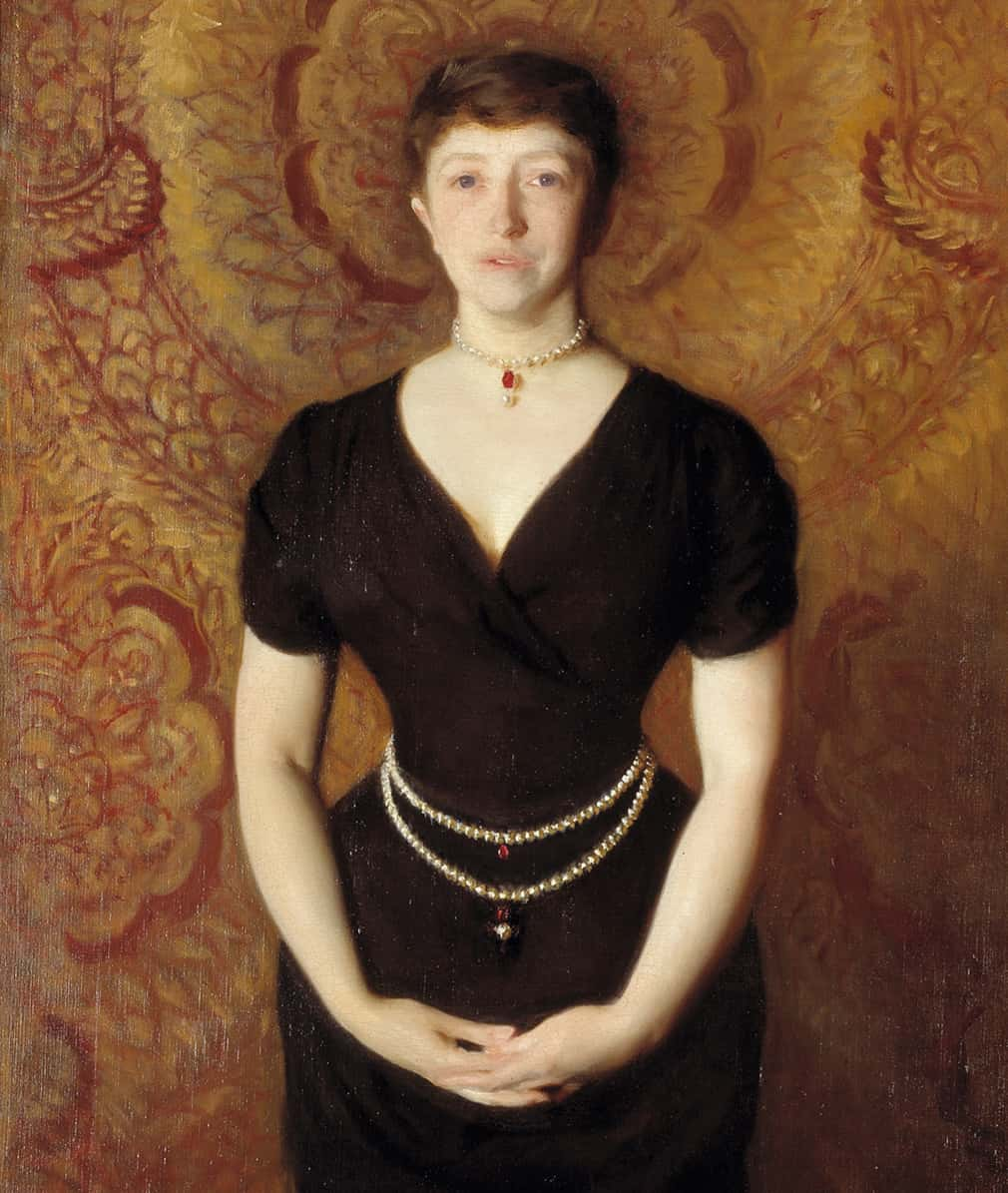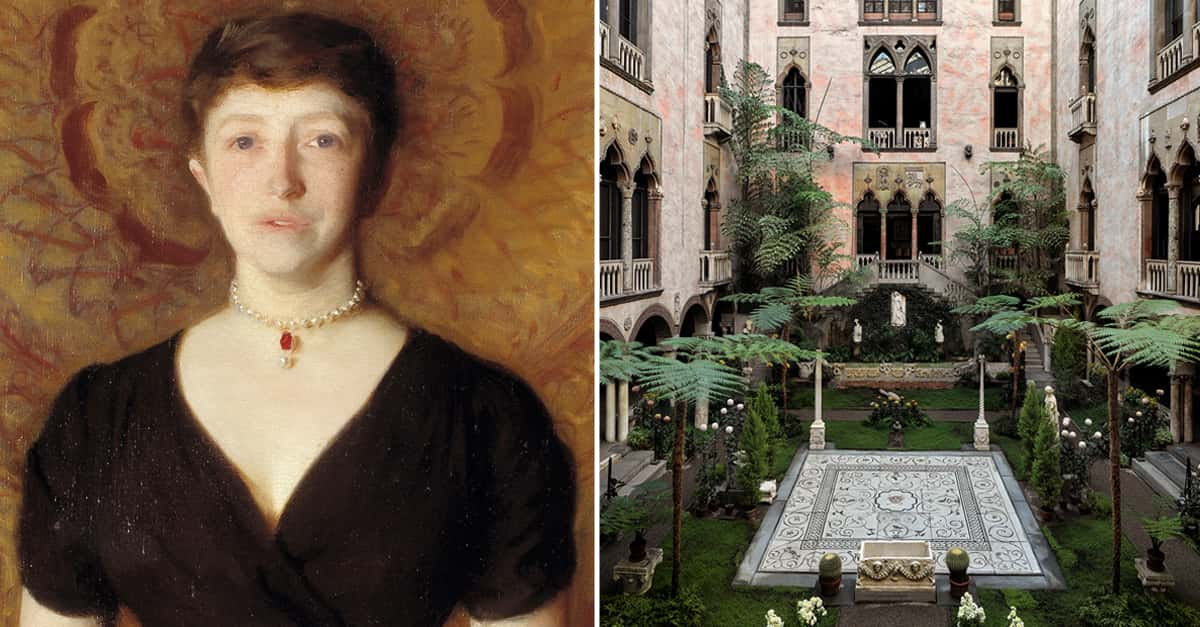The Isabella Stewart Gardner Museum in Boston is a museum unlike any other. There are no plaques on the walls explaining the relevance of the artworks hung there; there’s seemingly no rhyme or reason to the way things have been arranged or hung within its walls other than the idea that Mrs. Gardner wanted it that way—and so, that way it stays. In fact, “Isabella planned it this way” seems to be the only guiding principle in the whole place.
If a museum suffers a large theft, it’s usually brushed to the side—a shameful blip on their record, mentioned infrequently, if at all. But, since the Gardner Museum seeks to perfectly preserve its founder's exact vision for the place, two massive, empty frames hang on the south wall of the Dutch Room, signaling the heartbreaking absence of two large masterpieces, savagely cut out of their frames early one morning in 1990. The combined value of the 13 artworks that were stolen is $500 million, making it “the greatest known property theft in history.” That fateful day and the theft of those artworks have become part of the narrative of the place, and as a result, visitors can frequently be found staring at those empty frames, contemplating the absence of their former contents.
 Wikipedia
Wikipedia
Isabella
It would be easy to write off the Gardner museum as the vanity project of a rich Victorian-era widow with nothing better to do. While all of those descriptors are ostensibly true, there’s more to Isabella Stewart Gardner than that. Born to well-off parents in New York, a young Isabella Stewart met Jack Gardner, the eldest son of a wealthy Boston family, and they wed. It was a match made for the society papers, but that’s about where the fun ended. Their son Jack died just two months short of his second birthday from pneumonia, and after suffering a miscarriage, Isabella was told that she couldn’t bear children. Soon after, Jack’s sister, who had introduced the couple and was close friends with Isabella, died also, sending Isabella into a deep depression. Doctors recommended travel to break her out of it—why don’t they do that anymore?—and it worked.
A Life’s Passion Uncovered
Isabella had always loved art and travel but it was during this period that she began what would become her life’s work—building a monumental art collection. Her first major purchase at this time was a painting called The Concert by Johannes Vermeer, the Dutch master. This acquisition sparked a fire inside Isabella, and she and her husband began collecting not only paintings, but sculptures, furniture, tapestries, silverware, and artifacts in earnest. They were not only prolific collectors, but also patrons of the arts, as the many portraits of Mrs. Gardner by famous artists illustrate. While they kept residence in Boston, Isabella and Jack spent most of the final years of the 19th century abroad, building their collection.
 Wikimedia Commons Isabella Stewart Gardner, by John Singer Sargent.
Wikimedia Commons Isabella Stewart Gardner, by John Singer Sargent.
A Venetian Palace in Fenway
When Jack died in 1898, Isabella knew there was one way to keep the legacy of the happy years they’d spent together alive: by building the museum they’d both dreamed of. It was an idea they’d come up with when they bought Rembrandt’s Self-portrait, Age 23, and realized that their collection had outgrown their private residence. A location in the then-undeveloped Fenway neighborhood was chosen, and construction began, with Isabella overseeing every, and I mean every, detail. It was built in the style of the Renaissance-era Venetian palaces that had so deeply imprinted on her during her time in Europe. While noted architect William T. Sears was the man hired for the job, even he conceded that the building was more Isabella’s baby than anyone else’s.
 Wikimedia Commons Self-Portrait, by Rembrandt
Wikimedia Commons Self-Portrait, by Rembrandt
A Museum Unlike Any Other
The building encloses a massive courtyard garden, covered by a glass ceiling, the first construction of this kind in the US. Surrounding the courtyard on all sides are rooms that Isabella split into galleries. These rooms, as mentioned earlier, are unique in that they aren’t decorated in a way that reflects any curatorial mission—i.e. with works split by country, period, movement, or artist. The only vision for the layout and arrangement of works was Isabella’s vision—and it shows through the unique experience of visiting the museum. It can seem cluttered and dark in some rooms, airy and bright in others; with Italian furniture and Chinese artifacts in the Dutch room, then a fragment of fabric from one of Isabella’s gowns hanging below Titian’s Rape of Europa in the Titian room. But it was all part of her plan. Although she left some letters and journals that hint at her motivations, ultimately, the rhyme or reason behind it all was hers and hers alone. When the building was ready, she lived on the fourth floor and spent her days lovingly arranging her collection. She continued acquiring new works and rearranging them until her death in 1924, and in her will, part of the stipulations for the museum’s endowment stated that nothing could be seriously altered.
 Wikimedia Commons
Wikimedia Commons
Sunday Morning Comin’ Down
Unfortunately, art thieves are not held to the same high standards as museum directors and curators, and on a brisk March morning in 1990, two men significantly changed the museum forever when they broke in and stole 13 artworks, collectively valued at $500 million. That number made it the largest known theft of private property in history.
In the earliest hours of the morning on March 18, security guards admitted two men dressed as Boston police officers to the building. The “policemen” had told the guards they were responding to a disturbance call. Sound familiar? That's because it’s the premise of the final heist in the movie The Town, except in the film, the fake policemen are robbing another local landmark, the “Cathedral of Boston,” Fenway Park. Two security guards were on duty at the museum, one at a desk and one patrolling, and once the guard at the desk let the thieves in, they told him that they had a warrant out for him and handcuffed him, keeping up the pretense of their disguises. His name was Richard Abath, and once he was handcuffed, he noticed that one of the men had a fake mustache, and began to doubt their identities. When the guard on patrol returned to the desk area, the thieves handcuffed him as well. Then, they told the guards that they weren’t cops and that they were there to rob the place.
Leaving the guards tied up in the basement, the two men made their way around the museum, their movements tracked by the security system’s motion detectors. They entered the Dutch room and began with Isabella’s prized Rembrandt self-portrait, but were unable to take the heavy panel out of its frame. They moved on to two other Rembrandt works, both of which they brutally cut out of their frames: A Lady and Gentleman in Black and A Storm on the Sea of Galilee, the artist’s only seascape. They then took two more paintings and an artifact from the same room and moved about the museum, taking other artworks and objects. Curiously, the final work stolen was an Edouard Manet painting which lived in the Blue Room, although the motion detector never showed them entering the room. The frame, which they left behind, was found sitting at the security desk. Altogether, the whole thing took 81 minutes and two trips out to their car. The real police arrived at 8:15 am and freed the two guards from the basement.
 Wikimedia Commons The Storm on the Sea of Galilee, by Rembrandt
Wikimedia Commons The Storm on the Sea of Galilee, by Rembrandt
Crime of the Century
Immediately, the FBI got involved in the investigation. The case is interesting not just for the value of works stolen, but also for all the strange elements that have become part of it since that morning in 1990—including bizarre tips, false leads, possible underworld art sales, and secret communication through Boston’s major newspapers.
The list of works that was stolen and the manner in which they were stolen confused experts—there seemed to be no rhyme or reason for it, as the thieves passed over more valuable works to steal smaller artifacts, as well as the fact that the barbaric way they’d taken the two large Rembrandt works could’ve damaged them, decreasing their value. In 1994, a staff member of the museum was sent a ransom letter, but it was never followed up on. A number of theories popped up, including one that speculated that proceeds from the sale of the stolen artworks would go on to benefit the Irish Republican Army, and another that said infamous New England crime boss and FBI informant Whitey Bulger was behind it all.
The museum has offered a reward for the return of the stolen artworks, and despite the fact that it has grown multiple times since it was first offered, it’s never led to anything. The men who the FBI believe were the thieves are now deceased, and despite the Bureau’s ardent investigation, none of the works have ever been seen again. And so, in the museum, a number of large frames hang empty throughout the Dutch Room, simultaneously reminding the viewer of the circumstances of the absence of their former contents, and hopefully awaiting the potential return of those same contents one day.
 Wikipedia
Wikipedia











